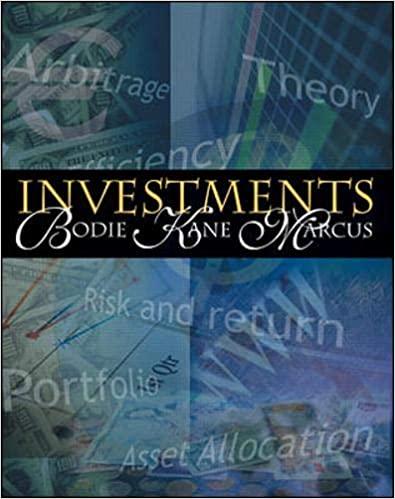Question
1. Solve for the following questions: Which of the following is not true about the variable growth valuation model? a. Is used primarily to evaluate
1. Solve for the following questions:
Which of the following is not true about the variable growth valuation model?
a. Is used primarily to evaluate firms in high growth industries.
b. The terminal value often comprises a substantial percentage of the total present value of the firm.
c. Involves the calculation of a terminal value.
d. Assumes that the discount rate during the high and stable growth periods is the same.
e. Assumes a high growth period followed by a stable growth period.
The calculation of free cash flow to the firm includes all of the following except for
a. Marginal tax rate
b. Change in working capital
c. Depreciation
d. Net income
e. Gross plant and equipment spending
The calculation of free cash flow to equity includes all of the following except for
a. Operating income
b. Change in working capital
c. Principal repayments
d. Preferred dividends
e. Gross plant and equipment spending
All of the following are true about the marginal tax rate for the firm except for
a. Once tax credits have been used and the ability to further defer taxes exhausted, the effective rate can exceed the marginal rate at some point in the future.
b. It is critical to use the marginal rate in calculating after-tax operating income in perpetuity.
c. It is critical to use the effective tax rate in calculating after-tax operating income in perpetuity.
d. The marginal tax rate in the U.S. is usually about 40%.
e. The effective tax rate is usually less than the marginal tax rate.
For a firm having common and preferred equity as well as debt, common equity value can be estimated in which of the following ways?
a. By adding the market value of debt and book value of preferred equity to the enterprise value of the firm
b. By subtracting the market value of debt from the enterprise value of the firm
c. By subtracting the book value of debt and preferred equity from the enterprise value of the firm
d. By adding the market value of debt and preferred equity to the enterprise value of the firm
e. By subtracting the market value of debt and the market value of preferred equity from the enterprise value of the firm
Step by Step Solution
There are 3 Steps involved in it
Step: 1

Get Instant Access to Expert-Tailored Solutions
See step-by-step solutions with expert insights and AI powered tools for academic success
Step: 2

Step: 3

Ace Your Homework with AI
Get the answers you need in no time with our AI-driven, step-by-step assistance
Get Started


